A Monstrous Undertaking: The VFX Behind Godzilla, Ghidorah, Mothra and Rodan

Production VFX supervisor Guillaume Rocheron, MPC, Method Studios and DNEG describe the creative and technical challenges of bringing four gigantic kaiju to the screen in ‘Godzilla: King of the Monsters.’
Four gigantic kaiju take center stage in Warner Bros.’ Godzilla: King of the Monsters, and it was critical for the filmmakers and production VFX supervisor Guillaume Rocheron (Ghost in the Shell) to ensure that the enormous creatures could emote, considering their considerable screen time and interactions with one another. Critical to the VFX production’s success was the development of the title character in a manner that harkened back to the original 1954 movie version, but also honoured his appearance in Godzilla (2014). “We built up on the design that Gareth Edwards [Rogue One] did in 2014,” explains Rocheron, who on behalf of MPC, previously worked on the franchise that now spans 35 films. “But Mike Dougherty [Krampus] wanted the dorsal fin spikes to be like the traditional star shape. We adjusted Godzilla’s proportions slightly to get more of an aggressive profile. His claws, instead of being like an elephant’s nails, were more the predatorial type that can be used in battle. In terms of the technology behind all the creature, we did some significant upgrades because we were trying to portray them as ancient gods. So, we had to give them some sort of personality. They couldn’t just be rampaging monsters.”
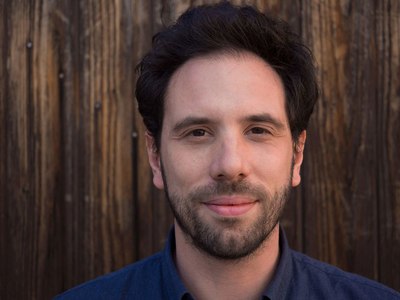
Guillaume Rocheron
On average, the kaiju’s behavioural traits were 95 percent animalistic and five percent human. “Some shots are a 100 percent animal and others are 20 percent human based on what we were trying to do,” Rocheron notes. “With Godzilla, we kept Godzilla’s face stoic. The range of emotion was fairly limited because we didn’t have the level of subtlety in our rigs that would allow for performances that would read. For Godzilla: King of the Monsters, the character lab at MPC advanced by leaps and bounds in terms of how sophisticated the facial rigs were — they’re to the point where we were able to achieve subtle emotion shifts that never had to be pushed too far, which would have made them cartoony. It helped us to get those great close-ups that happen quite a lot in the movie. A shift in an eyelid is going to give you a different feeling. Since we’re used to studying emotions on a human face, you want to have that sophistication.”
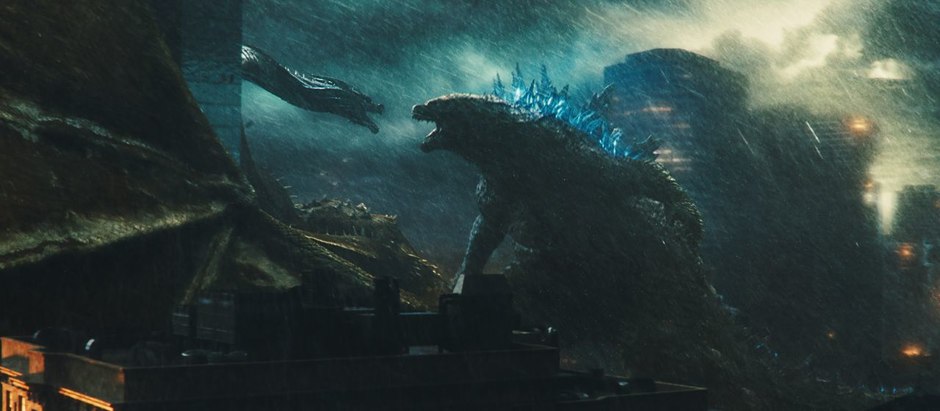
400 of the 660 shots MPC created involved creatures. “Ghidorah was the most complicated of the monsters to animate,” MPC animation supervisor Spencer Cook shared. Cook and his team visually referenced cobras and rattlesnakes rather than Western dragons in designing Godzilla’s ancient adversary. “Mike and his writing partner Zach Shields had created this incredible layering to Ghidorah, so that each of the three heads had a different personality,” he continues. “They have differences in their horns and some of the facial structure. But, at first glance they’re very similar; the animation of their emotion was going to be the best way to differentiate those personalities.”
For group behaviour, a particular animalistic mentality was adopted. “I thought the dynamics of a wolf pack would be an interesting concept to use, how the followers take their cues from the alpha, who keeps the pack in line,” Cook says. “We took those kinds of behaviors and incorporated them into Ghidorah’s heads. In particular, you’ll see the center head at times disciplining the other heads. The right head is the impulsive and angry one so he’s always ready to attack and is hyperactive. The left head is more curious and playful; he’d wait to see what the others did and followed that. They are still operating as one unit and have the same goal, it’s just on occasion, the alpha will have to remind them!”
A trio of professional motion capture performers, directed by Dougherty, played a major role influencing Ghidorah’s performance. “There was no motion capture used for the monsters in any part of this movie,” Cook reveals. “But what we did find to be extremely helpful was using mocap reference for particular sequences where the personalities would be most on display. We setup this mocap session in Los Angeles. I was there working with Mike and Guillaume. We shot the session from multiple camera angles and captured mocap data for backup. Each of the mocap performers portrayed one of the heads, so their personalities were consistent. We were able to use video reference in animation, picking out moments that seemed to capture the personalities and intention of the shot. Then as animators we would create the monster version of that.”

(From L-R) Spencer Cook, Brian Connor and Daryl Sawchuk.
In the film, Mothra undergoes a metamorphosis to arrive at her final, adult shape, which needed to be beautiful, feminine and deadly. “This is one of the monsters that changed the most from the original idea, which was a moth scaled up with a giant head,” Cook states. “The final Mothra design incorporated a praying mantis and deadly insect qualities so that she looked like a beautiful, elegant and deadly creature. There’s an amazing genre of cinema featuring female martial artists wearing long, flowing robes. They have a tremendous amount of beauty and power in their movements. We used that as inspiration for Mothra. One thing that we discovered early on, and the same with Rodan, was if you have a creature flap a lot, it looks smaller. So, we kept the wing flaps to a minimum and mostly glided around, which became one of the defining characteristics.”
Mothra also posseses a unique bioluminescence. “For Mothra, we had this shader attached to the color parameters on the surface geometry that allowed us to animate the value in the color,” Cook shares. “It was mostly blue and red depending on the mood and action of the shot. The effects guys would key off of that and create a glow about her when she needed it.”
Rodan’s design and performance were based on birds of prey, such as eagles, hawks, vultures, and condors. According to Cook, “We had to find that balance for Rodan of having a surface texture like fossilized lava but having enough flexibility that he could be an active combatant. He uses his wings like a heavy cape. Rodan never completely closes his wings and there was a draping quality to it reminiscent of Bela Lugosi’s Dracula cape. The lava was driven by the animation. Based on the previs, we knew where Mike wanted to have lava splashes, and if those needed to be a little, or a lot. We had these effects cards in our Playblast, that we could play for a scene, that were 2D visual representations of where the lava was going to go. For the most part, the effects were put in around Rodan’s performance.”
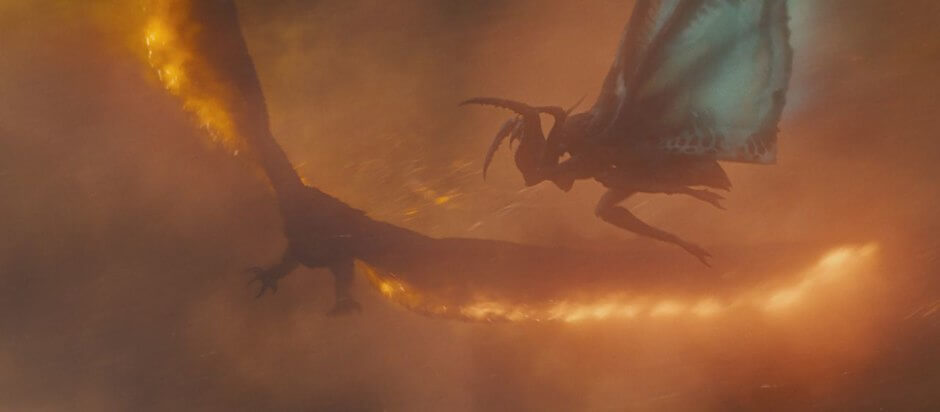
Method Studios handled the opening sequence, set inside a temple situated in China, where all the natural lifeforms, such as vegetation, are drawn towards the egg that contains Mothra in her larva state. “Anytime that Mothra moved, Guillaume wanted to make sure she was shaking the ground enough that loose pieces of stone and rubble would breakaway from the temple,” Method Studios VFX supervisor Daryl Sawchuk notes. “We had a lot raining debris that was intricate and complicated from a visual effects standpoint. We did a lot of development work to make sure we had a system in place that could drive effects destruction based off of the creature movements.”
Techvis helped determine camera angles, framing and eyeline references for the actors as well as cinematographer Lawrence Sher (The Hangover), who was shooting footage with an ARRI ALEXA 65 camera. “It was challenging to make sure we had enough room for these [80 foot] creatures to fit within the scene,” Sawchuk explains. “That [camera] allowed us more room to manipulate, shrink and move around plate elements. We had a metal gantry in its original and destroyed states as well as half of the circular ring that wrapped around the egg that the larva comes out of, a front façade for the laboratory at the other end, and the interior. But then everything else was entirely on us to build out as an environment.”
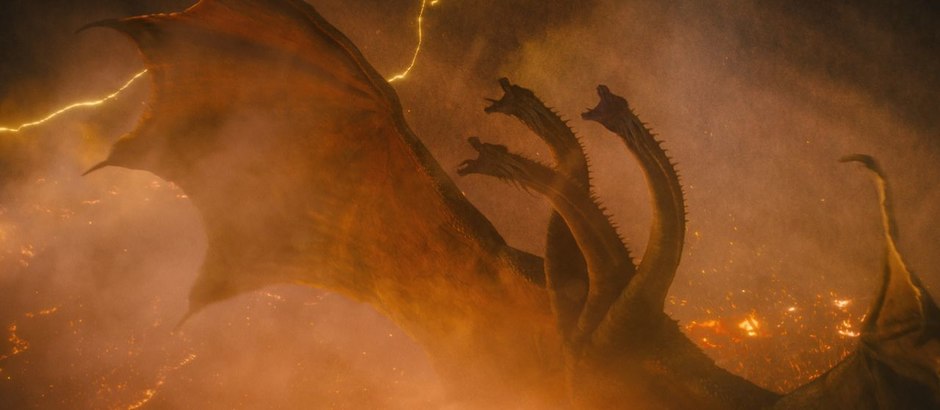
“For the larva state, we cheated by showing more internal anatomy than what would normally be visible in a caterpillar or slug, like a mini ribcage, spinal column and joints along the limbs,” Sawchuk continues. “They were backlighting the adult Mothra in a way where the bioluminescent glow was silhouetting and showing the internal anatomy. We definitely took some design cues off of that. We looked at a lot at nature and time-lapse photography of how butterflies go from a larva to a more beautiful, evolved state. There was a lot of leeway. We had to deal with Mothra in her more grotesque, less beautiful state than the full body winged version. Mike wanted to make sure that she had an element of femininity and was still somewhat beautiful in that early, ugly state. We worked on the shape and silhouette of the body, pinching in the waist and making a larger lower body section almost mimicking the curves of a female anatomy.”
Modelling and rigging the larva was particularly challenging. “We didn’t have to fully locomote the creature, as she was primarily in her circular ring and thrashing around in various coiled, sinuous poses,” Sawchuk shares. “But with the armored plates along her body, we spent a lot of time on their design by looking at recent car concepts and observing the way that different lines flow along the silhouette of a Tesla or whatever high-end race car you might see. We had all these great lines that ran along the body and intricate shell design. But, when it came to articulating the body, a system had to be figured out that would allow [like a potato bug] the webbing and membrane in-between the actual panels themselves to move. We didn’t want to limit the animators in term of the motions that they were after. There was quite a lot of challenging work on the rigging side to make sure that shell armor would slide along and deform correctly.”
Bespoke shots such as the Ghidorah destroying Washington, D.C., were DNEG’s responsibility. “We got the data for Washington, D.C. and built the buildings as they would be seen from that angle of the capital [for 10 kilometers],” DNEG VFX supervisor Brian Connor reveals. “Then we raised the water and flooded things. Our environment team went through and painted the buildings. We used Houdini for the ocean. There were loads of debris in the water, damaged battleships and aircraft carriers on fire as well as tracer fires and explosions. On top of that, we had to put in the Ghidorah storm, which is like a massive hurricane that spawns off mini tornadoes. You see Ghidorah when there’s a lightning flash, which they added to jazz it up. Michael Dougherty enjoyed having Ghidorah flying in a circle as well as going up and down as if he was swimming. Putting the lightning in at the right moments to show his performance was fun.”
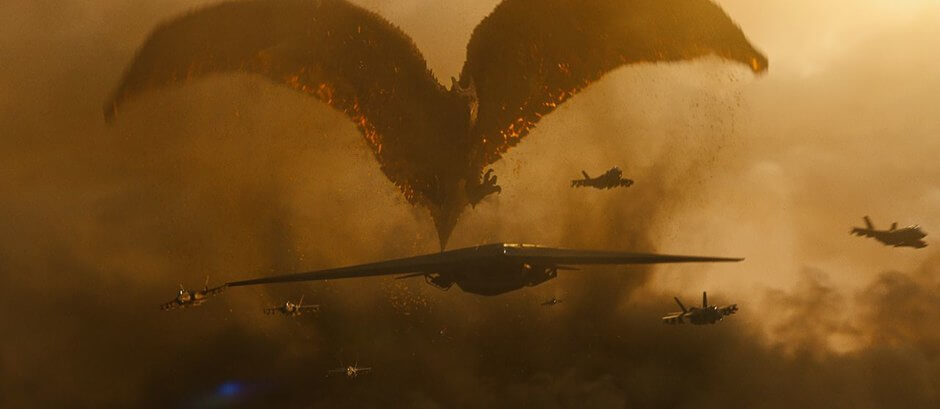
Mothra eventually reveals her adult form from behind a waterfall. “She is a heavily bioluminescent creature with the light coming through the waterfall and reflecting onto the set,” Connor states. “Onset they had these giant lights that had the blues, aquas and yellows that would undulate between the different colors. We used that same pallet to put in the bioluminescence and come up with something that was interesting and cool for the cocoon itself. Once Mothra emerged, she had her own bioluminescence and animation. We used the bioluminescence of the cocoon to show Mothra’s shape as she emerged, but did not light her from the front. We didn’t want her to look like a giant moth. Mothra was covered up by a brilliant, bright light as if she was in front of the sun. But, she is also emanating light, so she’s not totally silhouetted.”
DNEG produced vignettes where Secondary Titans, such as the massive mammoth known as Behemoth, make appearances. “We have ground POVs of his tusks smashing through buildings [in Brazil] and the debris above us is hitting the building next to it and coming down,” says Connor, who also handled another scene in a Middle Eastern oil field. “One of our amazing concept artists thought, ‘Wouldn’t it be cool to reveal this spider-creature [Kumonga] by having the legs coming up first as if it’s upside down?’ A mountain creature, Methuselah, also makes an appearance. “It took a massive undertaking late in the game,” Connor explains. “First, there are simulations of birds flying away, which tells you that something is going to happen. Then there is a rumble and dust starts to come up, and all of sudden, the trees begin to move and sway. There were so many small details that had to interact with each other. The sequence was 600 frames long as well and we needed to be able to see the creature’s face. But when we did the simulations, it was always covered. We had to go in there to clear it out in an organic way. In order to hit story beats, we had to strategically and deliberately plan and design effects that would take away effects. We were provided a plate of the foreground with houses to give it scale, but then we added mountains to give it an even bigger scale so you could tell the titan was huge. These were big, heavy shots that required most of the departments.”

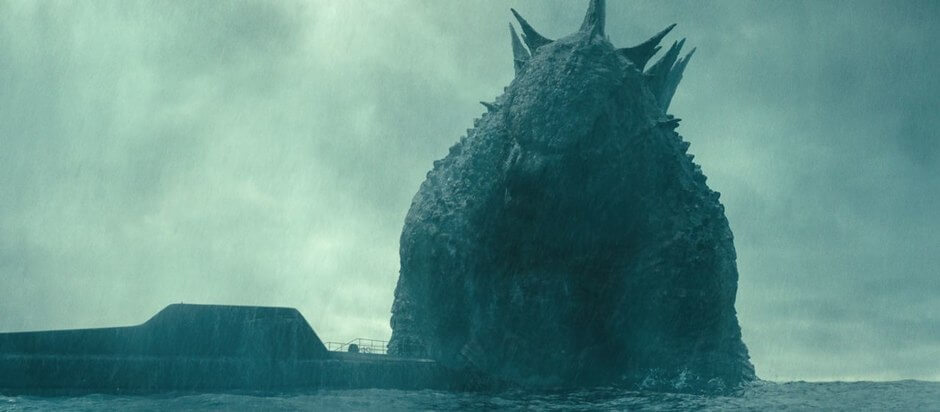
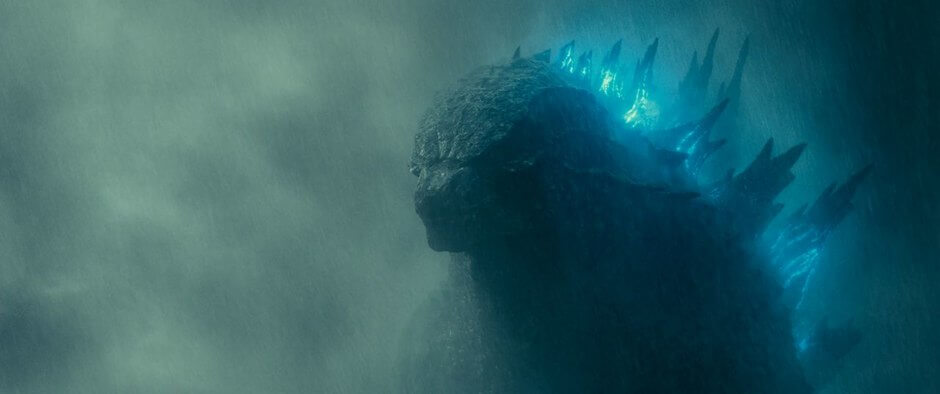
By: Trevor Hogg

熱門頭條新聞
- Ventana Sur 2024: Official Selection
- Infinity Nikki hits 30 million pre-registrations ahead of launch later this year
- UNCLE CHOPS ROCKET SHOP LAUNCHES NEXT MONTH
- Industry legend Peter Molyneux joins NG25 Spring
- Lexar Introduces Professional Workflow 6-Bay Docking Station, Workflow Portable SSD, Workflow Reader Modules, and Three CFexpress 4.0 Cards
- The Next Generation Soul Game is Officially Released!
- QUERN DEVELOPERS JOIN FORCES WITH BLUE BRAIN GAMES FOR MYSTERIOUS NEW ADVENTURE DIMHAVEN ENIGMAS
- Announcing FMX 2025: Rhythm of Change
